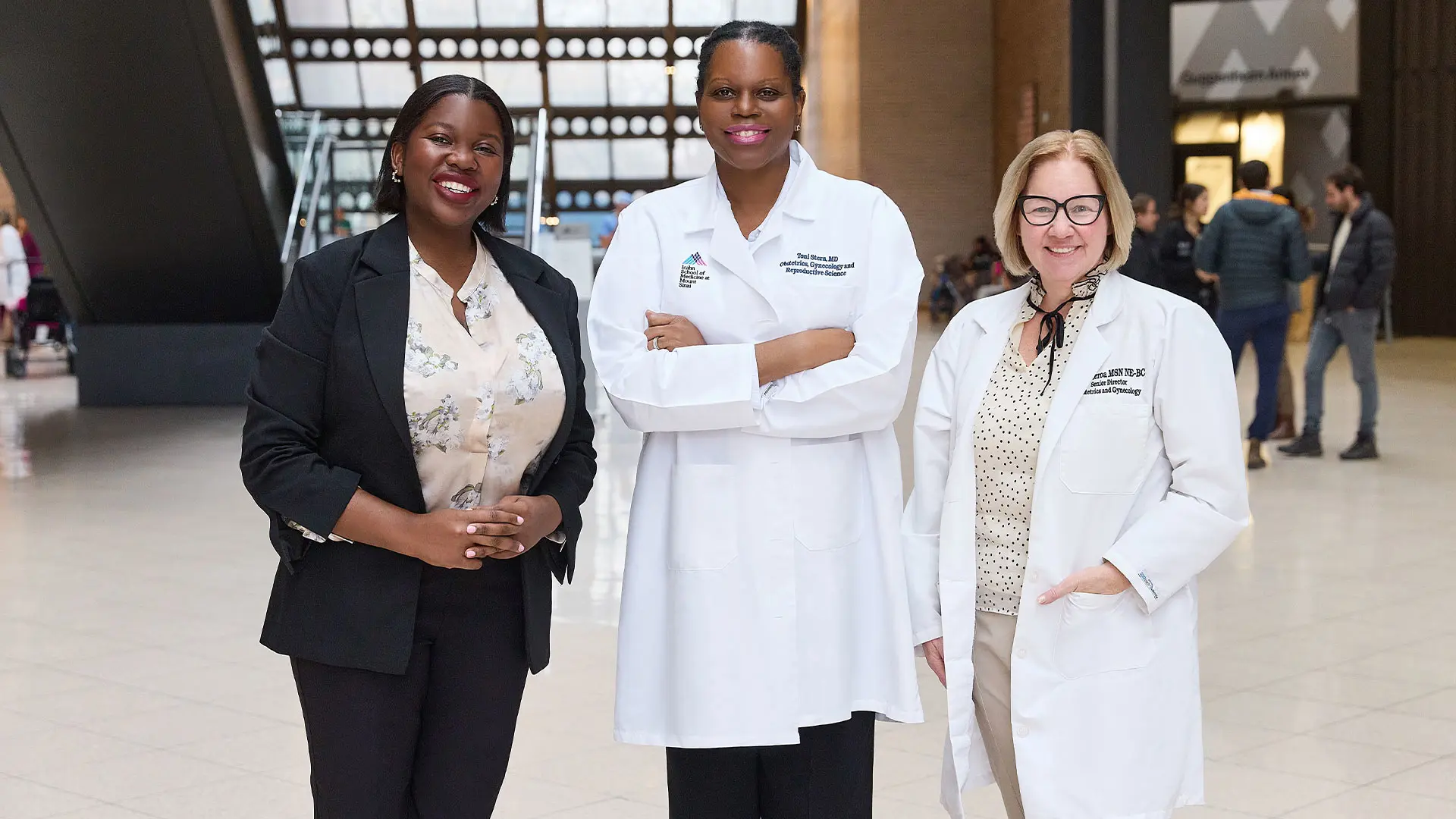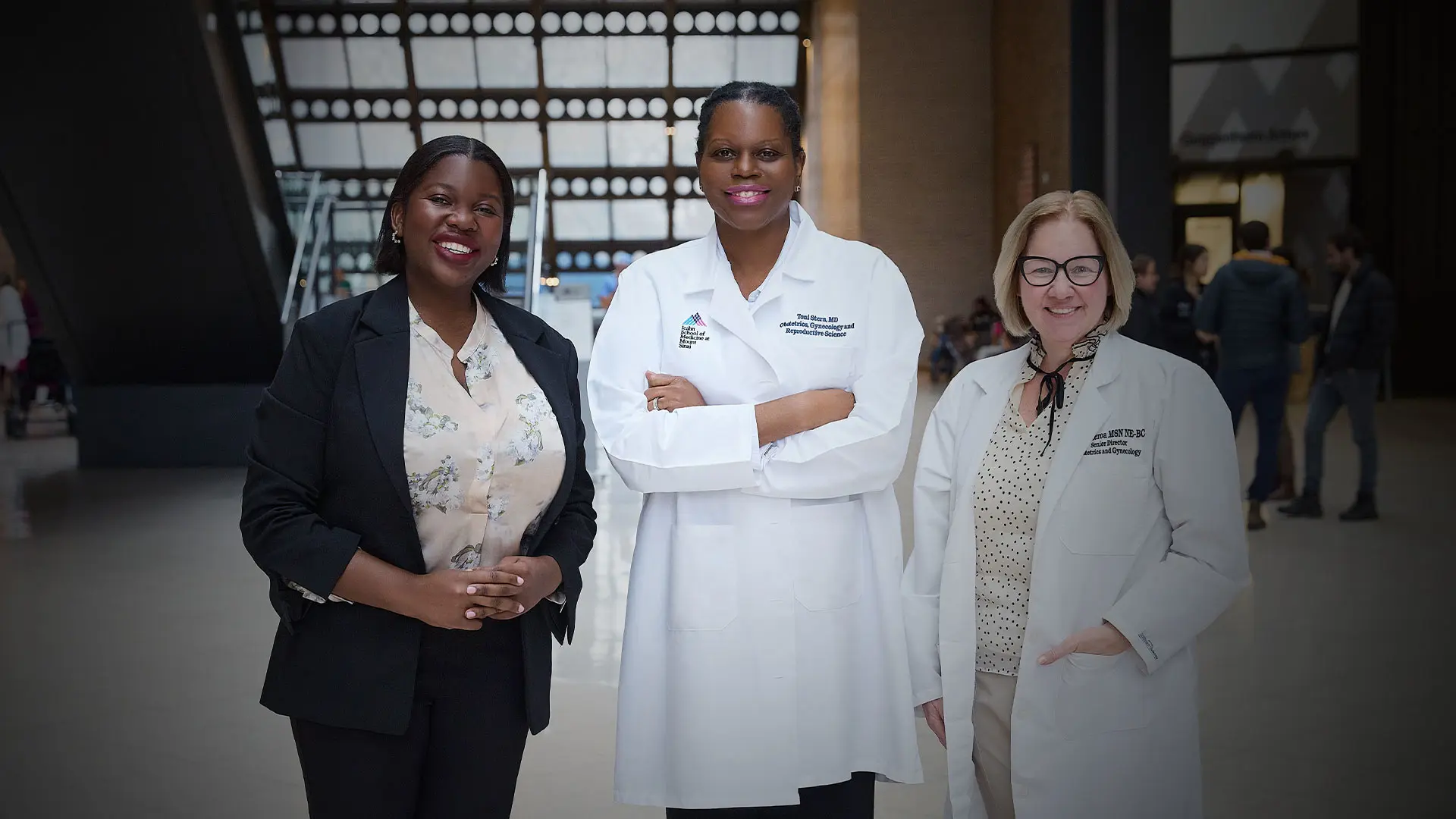To improve the quality of care, reduce readmission rates, and optimize the patient experience, the Raquel and Jaime Gilinski Department of Obstetrics, Gynecology and Reproductive Science at Mount Sinai is expanding its postpartum post-discharge phone calls to include obstetric patients following a vaginal birth—who account for approximately 60 percent of the Health System’s more than 11,000 annual deliveries.
The program is a continuation of a larger focus on improving patient experience and quality metrics. About two years ago, Mount Sinai’s Transitions of Care Center began calling all patients who delivered via Cesarean birth. This was a critical first step in improving engagement by providing support to the highest risk patients during the postpartum period.
During the next phase of the initiative, launching in February 2024, Mount Sinai is ensuring that all patients who have a vaginal birth at the Health System’s two largest birthing hospitals will receive standardized digital outreach following the birth. This digital communication to patients at The Mount Sinai Hospital and Mount Sinai West includes an automated phone call and text message within 48 to 72 hours post-discharge. The automated system will attempt to reach patients three times, leaving a voicemail and text message in English and Spanish, with the goal to expand to other languages.
“We recognize that post-discharge calls are a well-established tool to improve patient experience and reduce adverse outcomes. With this innovative program, we have partnered with a health care technology organization to foster a culture of safe, timely, and equitable care of the highest quality,” says Toni A. Stern, MD, MS, MBA, Vice Chair Quality, Diversity, Equity, and Inclusion, and Chief Patient Experience Officer, Mount Sinai Health System.
The automated call includes 11 questions and instructs the patient or caregiver to press a number on the phone keypad to respond to each question. Topics will address clinical and administrative concerns, including:
- 1.
Discharge instructions
- 2.
Patient discharge materials
- 3.
Return to normal function
- 4.
Medications
- 5.
Pain
- 6.
Bleeding
- 7.
Postpartum/postoperative infection
- 8.
Post-birth warning signs
- 9.
Elevated blood pressure
- 10.
Status of infant
- 11.
Follow-up appointment

From left: Thandiwe Kangwa, MPA, CPXP, Toni A. Stern, MD, MS, MBA, and Erin Figueroa, MSN, RN, NE-BC.
“The transition from hospital to home can be difficult for new parents. Post-discharge phone calls can provide additional support to the family unit.”
Erin Figueroa, MSN, RN, NE-BC
At the end of the call, patients can respond to an open-ended question about their concerns or other feedback by speaking or texting. The message also reminds patients that if there is an emergency, they should call 911 or go to the nearest emergency department. “This program increases interaction with patients by enabling Mount Sinai to follow up with every single person who gives birth in one of our facilities, streamlining processes through the timely identification of patients requiring additional support,” says Thandiwe Kangwa, MPA, CPXP, Director for Quality and Clinical Transformation, Mount Sinai Health System.
If a patient reports an issue, the appropriate care team will be notified for resolution. If it is a low-risk problem, such as having difficulty breastfeeding or filling a prescription, the provider will call within 24 to 48 hours. If the patient indicates a high-alert concern, such as heavy bleeding, high blood pressure, or a foul odor, the clinical staff will be immediately notified by text message so they can respond right away. “We have a clinical care team member closely monitoring the messages,” Ms. Kangwa says.
This program has been linked to a reduction in readmissions, because it enables the health system to catch any concern early, before the one-week postop check-up, and address it before readmission might be needed. Parents who had a fetal demise will not receive the automated calls; they receive a personal call. In addition, parents with a child in the neonatal intensive care unit (NICU) will not be asked about the health of their child, as suggested by parents who have had a child in the NICU. The next stage in the program will provide follow-up for all patients who have had a gynecologic procedure, such as a hysterectomy.
Designing the program was a major undertaking. An interdisciplinary team of physicians, nurses, lactation consultants, administrators, and representatives from operations and information technology worked with an approved vendor in digital technology for the technical aspects of the project. The questions were developed by leaders in obstetrics and care quality, medical directors, and front-line care providers. Nurses played an integral part of writing and revising the script.
“The transition from hospital to home can be difficult for new parents. Post-discharge phone calls can provide additional support to the family unit,” says Erin Figueroa, MSN, RN, NE-BC, Senior Director of Nursing Women's Services, Obstetrics and Gynecology. “This simple method reinforces discharge plans and can identify potential adverse events. This continuity of care helps to improve communication, provide after-care advice, and aid in managing symptoms and complications.”
The automated system will input all patient data into a dashboard that enables the Health System to track patient outcomes, analyzing variables including race/ethnicity, type of health insurance, age, language, and the facility where patients gave birth. The data will inform care by enabling providers to assess patient outcome measures, such as postpartum complications, readmission rates, and the patient experience. “We are excited that this program will enable us to improve outcomes and enhance patient care without overburdening our health care providers,” Dr. Stern says.
